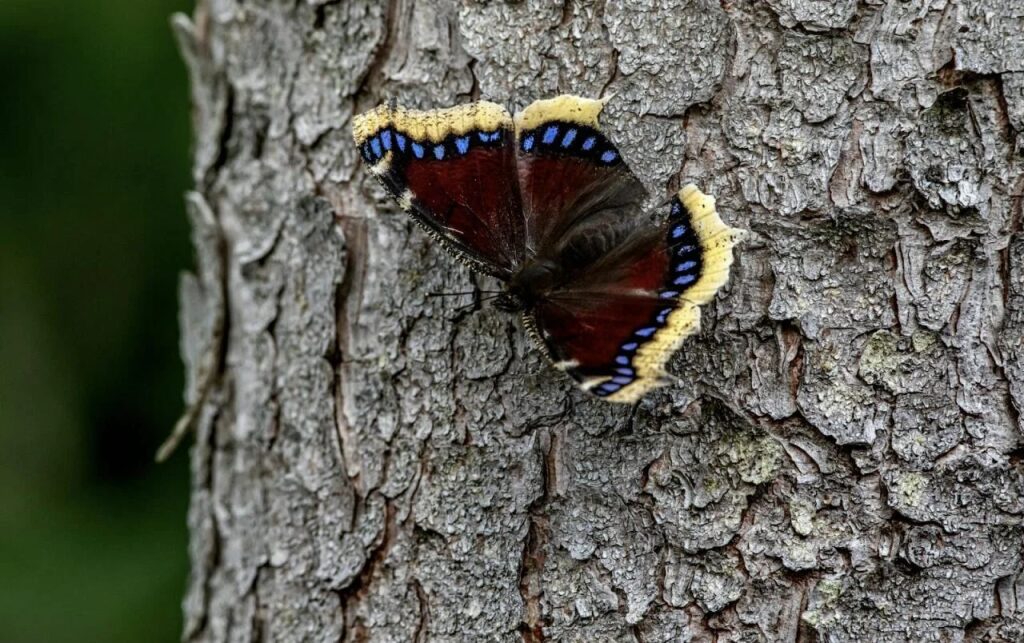As an avid gardener, I’ve grown to appreciate the intricate balance of nature. Recently, I stumbled upon a fascinating discovery in my garden – a leaf covered in delicate, black geometric shapes. Initially, I was perplexed, wondering if it was a beneficial or harmful presence. After some research, I learned that these patterns were actually eggs of the Nymphalis Antiopa butterfly, also known as the Mourning Cloak.
Unveiling the Mysteries of the Mourning Cloak

The Mourning Cloak butterfly has a unique lifecycle and habits. The eggs, laid in clusters, resemble a delicate black lace. The larvae feed on leaves, but prefer trees and shrubs, making them a beneficial presence in my garden. These butterflies also aid in decomposition by feeding on rotting fruit.
Witnessing the Transformation
Observing the lifecycle of these butterflies is captivating. From the emergence of caterpillars to their transformation into beautiful Mourning Cloak butterflies, each stage is a wonder. The caterpillars go through several instars, shedding their skin and growing larger. Once fully grown, they pupate, undergoing a remarkable transformation.

The Balance of Nature
As gardeners, we often focus on the immediate impact of insects on our plants. However, it’s essential to consider the broader picture. The Nymphalis Antiopa butterfly exemplifies nature’s balance. While the caterpillars eat leaves, they won’t devastate your garden. By providing a habitat for these butterflies, you’re contributing to a healthier ecosystem.

Embracing the Unexpected
If you encounter these eggs or caterpillars in your garden, I advise leaving them be. Enjoy the process and observe the transformation. If concerned, gently move the caterpillars to a tree or shrub where they’ll thrive. Gardening is about finding harmony between plants and creatures. Next time you spot something unusual, investigate before acting. You might discover something amazing, like I did with the Nymphalis Antiopa butterfly eggs.

The Joy of Gardening
Gardening is an adventure, full of surprises and challenges. Each season brings new experiences, making it incredibly rewarding. By embracing the unexpected and finding balance in nature, we can create a thriving ecosystem in our gardens.
